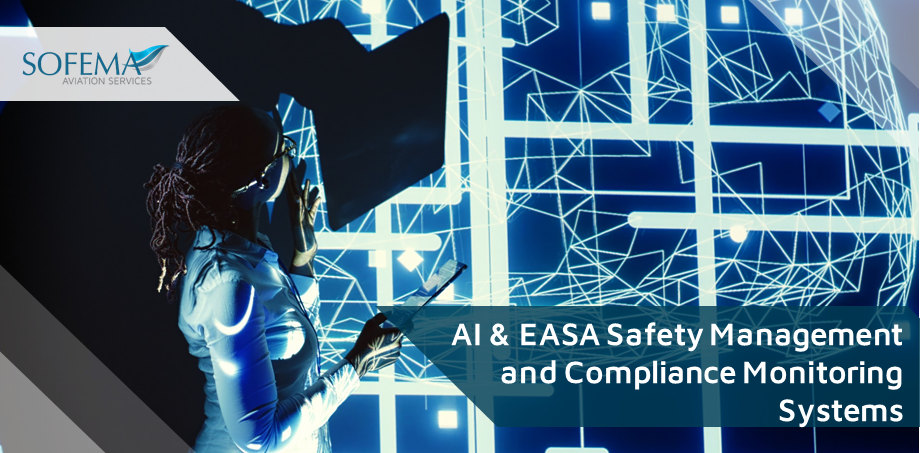Sofema Aviation Services (SAS) considers the impact of AI on EASA Safety Management and Compliance Monitoring Systems
Introduction
The integration of Artificial Intelligence (AI) into the European Union Aviation Safety Agency (EASA) – Safety Management and Compliance Monitoring Systems, presents a myriad of opportunities and challenges. It is worthwhile to identify the primary concerns and touchpoints that influence both the effectiveness and the implementation of AI technologies in aviation safety and compliance. Addressing these concerns through collaborative efforts, regulatory adaptation, and a commitment to ethical principles will be key to harnessing the full potential of AI in enhancing aviation safety. The current regulatory framework will not fully accommodate the rapid advancement and integration of AI technologies. EASA and other regulatory bodies shall need to update and adapt regulations to ensure that the use of AI in aviation safety management is effectively governed.
Opportunities
- Enhanced Risk Identification and Management: AI can significantly improve the prediction and identification of potential safety risks through advanced data analytics.
o By processing vast amounts of data, AI systems can uncover hidden patterns, trends, and correlations that might be overlooked by traditional methods.
- Improved Decision-Making: The integration of AI into safety management systems can support better decision-making by providing stakeholders with insights derived from complex data analysis.
o This can enhance the efficiency and effectiveness of safety measures and regulatory compliance strategies.
Challenges
- Data Privacy and Security: The use of AI in safety management systems involves handling sensitive data, and raising concerns about data privacy and protection.
o Ensuring the security of this data against cyber threats is paramount to maintaining trust and integrity within the aviation industry.
- Algorithm Transparency and Accountability: AI systems can be complex and their decision-making processes opaque.
o There is a need for transparency in how these systems make predictions and decisions to ensure accountability, especially in situations where safety is at stake.
- Training and Expertise: Implementing AI in safety management systems requires specialized knowledge and skills.
o There is a need for ongoing training and development to equip aviation professionals with the expertise needed to effectively use, manage, and oversee AI systems.
Touchpoints for Effective Integration
- Stakeholder Engagement: Involving all stakeholders, including regulators, airlines, technology providers, and aviation professionals, in discussions about the use of AI is crucial.
o Their input can help address concerns, identify potential risks, and ensure the technology meets the industry’s needs.
- Ethical Considerations: The development and deployment of AI systems must adhere to ethical standards, especially concerning fairness, non-discrimination, and respect for human rights.
o Ethical AI use is essential for maintaining public trust in aviation safety.
- Continuous Monitoring and Evaluation: The impact of AI on safety management and compliance systems should be continuously monitored and evaluated.
o This approach allows for the identification of issues and the refinement of AI applications to better serve the industry’s safety objectives.
Next Steps
Follow this link to our Library to find & download related documents for Free
Sofema Aviation Services and Sofema Online provide EASA – Compliant Webinar, Classroom & Online training in over 50 Quality Assurance and Compliance Related Subjects – Please see the websites or email team@sassofia.com
Tags:
Artificial Intelligence (AI), Aviation Quality Assurance, Aviation Safety Management, Compliance Monitoring Systems, Compliance Related Subjects, Decision Making, European Union Aviation Safety Agency (EASA), Risk Identification, Safety Management, SAS blogs, SAS Library




